Grebes
To the casual eye, grebes (and loons) look like ducks. However, while ducks (both divers and dabblers) and geese are related, grebes and loons stand apart both from ducks, but also from each other. Like a loon, a grebe’s legs are set far back on its body, which makes it an excellent swimmer and diver, but an awkward walker. But, a grebe is smaller than a loon, has a longer neck, shorter wings, short tail, and lobed toes (loons, ducks, swans, and geese have webbed feet).
Six species of Grebes have been reported around the Lake: Pied-billed, Horned, Red-necked, Eared, Western, Clark’s, although some are uncommon. Four species are shown below. As grebes catch fish they are usually seen in the deeper waters.
 Although far from an everyday sighting, Western Grebe can be seen around the Lake at any time of the year. However, most of them leave for the Coast in the winter months.
Although far from an everyday sighting, Western Grebe can be seen around the Lake at any time of the year. However, most of them leave for the Coast in the winter months.
 Seen from the front, the neck of the Western Grebe is white.
Seen from the front, the neck of the Western Grebe is white.
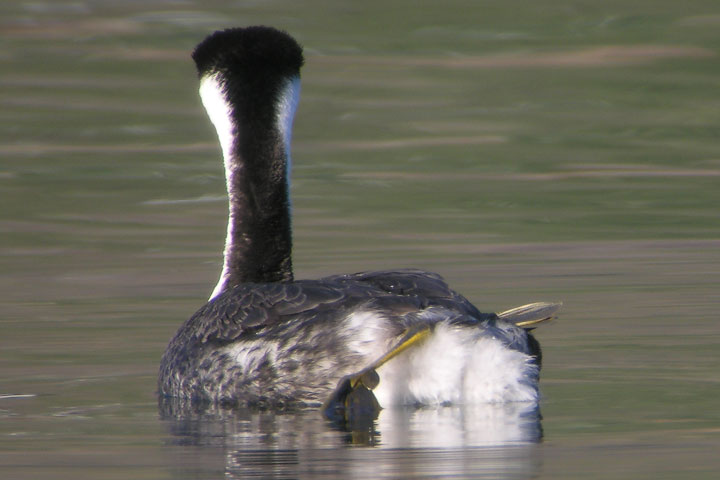 It is November and this Western Grebe has its feet tipped up out of the cold water, revealing the lobed toes (as opposed to the webbed feet of ducks).
It is November and this Western Grebe has its feet tipped up out of the cold water, revealing the lobed toes (as opposed to the webbed feet of ducks).
 Horned Grebe
Horned Grebe
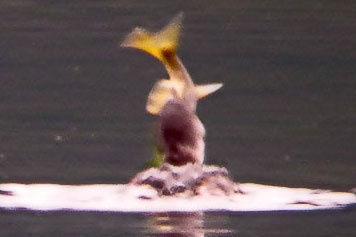 This picture of the head of Horned Grebe surfacing with a fish in its mouth is, alas, somewhat fuzzy.
This picture of the head of Horned Grebe surfacing with a fish in its mouth is, alas, somewhat fuzzy.
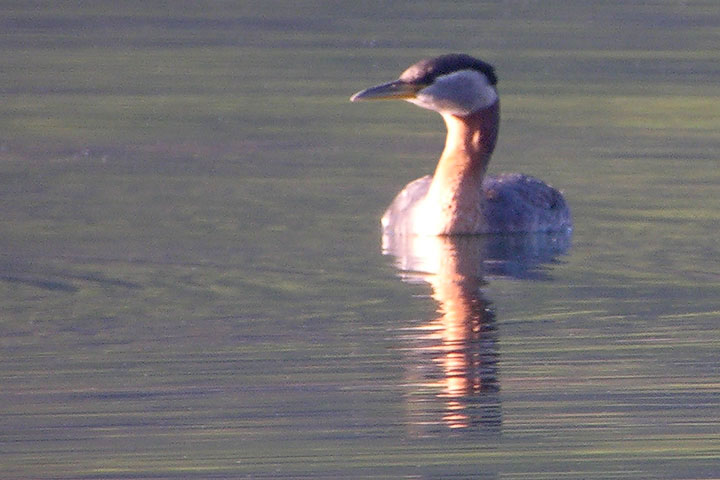 Red–necked Grebe
Red–necked Grebe
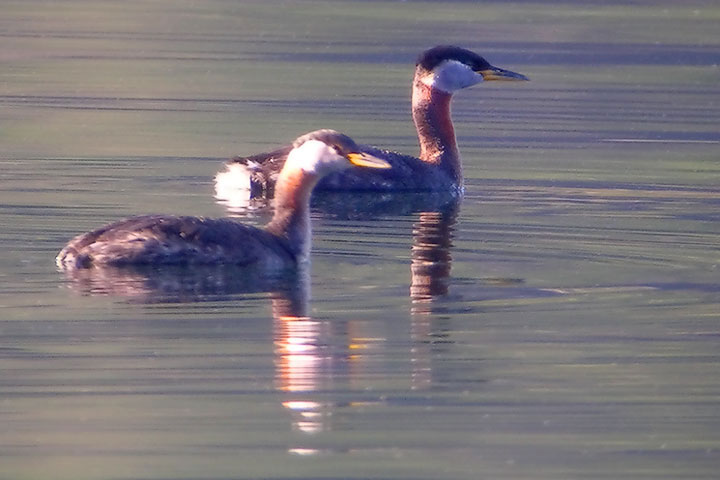 A Red–necked Grebe couple.
A Red–necked Grebe couple.
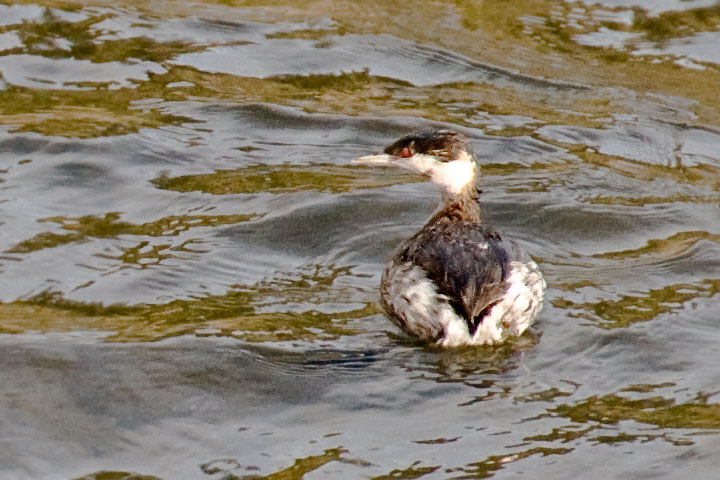 White on the back of the Horned Grebe’s head sweeps up farther than on the Red-necked Grebe.
White on the back of the Horned Grebe’s head sweeps up farther than on the Red-necked Grebe.
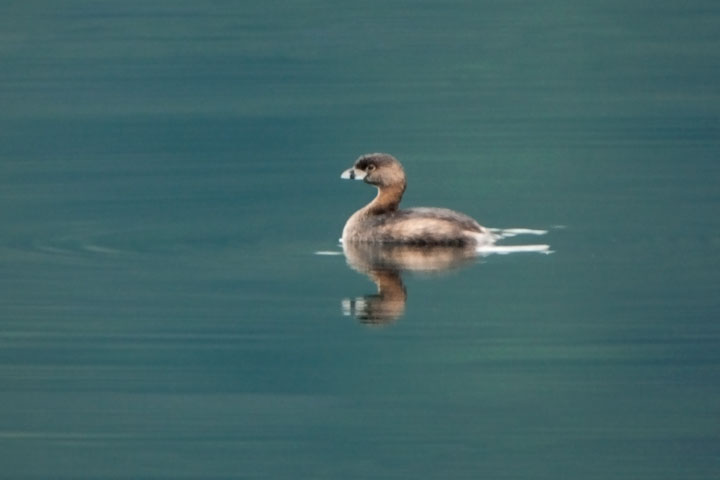 A Pied–billed Grebe. The bird’s name comes from the broad black band which, in the summertime, encircles, its blunt bill.
A Pied–billed Grebe. The bird’s name comes from the broad black band which, in the summertime, encircles, its blunt bill.
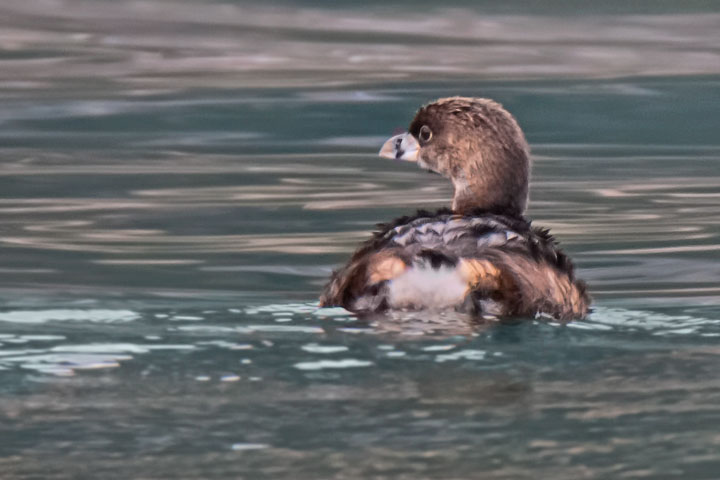 A Pied–billed Grebe at the Nelson waterfront in March.
A Pied–billed Grebe at the Nelson waterfront in March.
Information from Wikipedia: Grebes.
![]()